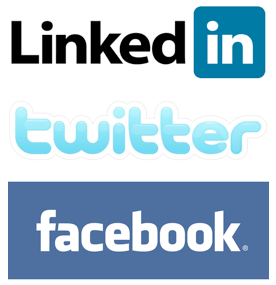The Latest on Personal Branding, Managing Your Online Image and Social Media Trends

I’ve previously written about personal branding and the importance of cultivating and maintaining a professional online image. Just as social media tools have become permanent fixtures in many lives, they continue to play greater roles in career planning. The three articles below represent some of my recent findings on this topic of personal branding and career planning.
First is a recent article, “On College: Polish Your Online Image for the Admissions Process ,” from one of the local newspapers. It’s a quick read that contains some sound advice on creating and sustaining your online image, including:
- Make your online profiles private.
- Use the Internet to showcase your positive traits.
- Know that if you “like” a college, then that particular college is part of your network and will have access to your profile, unless you specify otherwise.
- Deselect any group that can be viewed as negative and instead, join ones that accurately and positively show your interests.
- Google yourself and see what comes up.
- Use an appropriate e-mail address.
- If you put your cell phone number on your applications, then make sure your voice-mail greeting is simple and free of loud and potentially distracting background music.
Facebook, Twitter and LinkedIn are still the most widely used social media tools. From the start, LinkedIn was known to be a career planning tool for working professionals and job seekers. But more professionals and job seekers have been using Facebook and Twitter as career planning and development tools as well. A
To illustrate this point is a recent Mashable article, “How to: Use Twitter Hashtags to Boost Your Job Search.” This article starts with the premise that since about 300 to 500 jobs are posted per minute on Twitter, the use of a hashtag (i.e., the “#” symbol followed by a topic that people sometimes include in a tweet to label it and make it more searchable) can be helpful as you focus on only the tweets you want to see. Some examples of hashtag categories that might be useful in a job search include the following:
- General job search, such as #jobs, #jobadvice, #jobhunt, and #jobsearch.
- Job postings, such as #jobposting, #greenjobs, #salesjobs, and #telecom.
- Chats, such as #jobhuntchat, #careerchat, #internchat, and #hirefriday.
- Resumes, such as #resume, #resumewriting, and #CV.
- Industry conferences
- Career advice, such as #career, #careers, and #employment.
The third article is courtesy of Social Media Today – “Social Media 3Q Update: Who Uses Facebook, Twitter, LinkedIn, and MySpace?” An interesting, informative and reader friendly demographic analysis is given on the users of the aforementioned popular social media sites and is well worth the read. The following are some of the data referred to in the article:
- Facebook has 540 million users.
- Facebook reaches almost 57% of the people in the U.S.
- Twitter has 98 million users, but the number is likely more as many users that use other applications to interact on the site are not counted.
- LinkedIn has 41 million users.
- Myspace has 67 million users, despite the opinion of many that MySpace is irrelevant and/or a dying entity.
These four sites are still the biggest among all social media tools. According to this article:
- “Facebook has become the social sharing network.”
- “Twitter is the thought-provoking, learning network.”
- “LinkedIn is the branding and résumé network.
- “MySpace is the social relationship network.
- And the “demographics are settling in to reinforce the existing nature of each of the networks.”